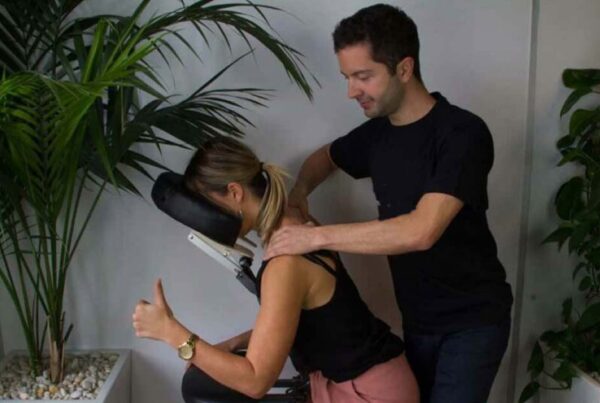
Caring for a loved one in palliative care can be an emotional and difficult experience. You want to do everything you can to make sure your loved one is as comfortable and pain-free as possible while making the most of the time you have together.
A palliative care massage experience can be a meaningful way to show love and support, and create positive memories and a sense of comfort and peace for all involved.
Let’s have a look at how hospice and palliative care massage can be integrated into a care plan, the benefits, and the most suitable massage types for those in palliative care.
What is a palliative care massage?
When a loved one is facing a serious illness, it can be a challenging time. Fortunately, there are some ways to improve the experience and make them feel more comfortable. One of these ways is through the use of massage therapy.
Hospice and palliative care massage are specialised types of massage that focus on providing comfort, pain relief and quality of life for those living with a serious illness.
Massage therapy can address both the physical and emotional challenges that patients in hospice and palliative care settings might be facing.
How does massage integrate with palliative care?
Integrating massage therapy into palliative care has become increasingly popular in recent years.
Research shows that it can be a valuable tool for improving the quality of life for patients with life-limiting illnesses, decreasing both pain intensity and anxiety while increasing the patients’ sense of relaxation and inner peace.
Palliative care massage is low-risk, non-invasive, and effective, making it a powerful tool to complement other forms of medical treatment.
While massage won’t directly address medical concerns, this type of care can help to mitigate any side effects of treatments, reduce pain, and address any emotional stress.
The benefits of massage in palliative care
There are many benefits of palliative massage and they can have a significant impact on the patient’s quality of life during the end-of-life stage. Massage therapy can help to alleviate feelings of isolation and provide a safe and nurturing environment to promote relaxation and help unwind.
Let’s explore just how far-reaching the benefits of hospice and palliative care massage can be, here are a top few:
- Pain relief: Massage therapy can help to reduce tension and soreness in the muscles and can trigger the release of endorphins, which can act as natural painkillers that can provide long-lasting relief.
- Stress reduction and enhanced well-being: By promoting relaxation and reducing tension in the muscles, palliative massage can help to lower heart rate and blood pressure, leading to a greater sense of calm and well-being.
- Improved sleep: relaxation is promoted and pain and discomfort is alleviated, leading to better sleep quality and a more restful night’s sleep.
- Increased sense of connection: palliative massage can offer a sense of connection between the mind and body. Many patients in palliative care may feel disconnected from their bodies and their emotions, and massage can help to promote a greater sense of awareness and connection.
Palliative massage can bring comfort and support to the loved ones of those in hospice or palliative care.
Considerations of Massage for palliative care
Massage therapy can offer great comfort and relaxation for those in hospice or palliative care, but there are a few considerations to be aware of.
There may need to be some modifications to the way this massage therapy is delivered to ensure it’s safe and supportive for your loved one. It’s important to make sure your therapist is qualified for this type of massage so that they can adapt techniques and approaches to account for mobility issues and different treatment environments.
Let’s look at some of the most important considerations to make when booking a palliative care massage.
The position is a top consideration. The therapist will take into account the patient’s preferences and level of comfort. Your loved one will be able to lie on their side or back, sit in a recliner, or take any position that feels most comfortable.
The duration of the massage will be suited to your loved one’s energy levels.
For patients in palliative care, the pressure will be lighter and gentler.
Massage therapy can take place in any environment, with trained massage therapists able to work around various types of medical equipment.
Finally, communication is key in providing effective massage therapy to patients in hospice or palliative care. Nonverbal cues and other ways of communication will be noticed, meaning that the treatment is tailored to the patient’s specific needs and is provided safely and effectively.
Precautions for massage for Palliative care
When it comes to a massage therapy in palliative care, safety and comfort should be top priorities.
Ensure that the massage therapist is aware of your loved one’s medical history, and current condition, and let them know about any painful or sensitive body areas.
It’s also important to let your massage therapist know about any medical devices on or around your loved ones so that proper care and consideration can be taken.
Massage for those in hospice and palliative care is safe, so making sure that there is open communication between your massage therapist and your loved one (or you, if the former isn’t possible at this stage) will make sure that comfort and relaxation are prioritised.
With proper precautions, massage therapy is a safe and helpful tool for those in palliative care.
Types of massage therapy in Hospice and Palliative care
There are a few different types of massage therapy that are great options for those in palliative care. They each have their benefits and considerations. Let’s take a look at some examples.
Swedish relaxation massage is a gentle and relaxing form of massage that uses long strokes, kneading, and circular movements to promote relaxation and ease tension in the muscles. It can be a good option for those who are experiencing anxiety, stress, or insomnia.
Essential oils can help calm the mind and relax the body, making aromatherapy message massage a great option for hospice and palliative care massage.
Feet massage for palliative care patients is increasingly popular. Foot massage has been shown to be helpful for those experiencing nausea and pain, making reflexology a top option.
For those with limited mobility or who struggle to lie down, a seated chair massage is a great option. It typically involves short sessions and focuses on the back, neck, and shoulders.
Massage therapy can provide a valuable complementary treatment option for hospice and palliative care patients.
With Blys, you can book qualified and compassionate mobile massage therapists available to come directly to you or your loved one, providing the benefits of massage therapy in the comfort of their own environment.
Interested in booking a palliative care massage for your loved one? Learn more about our services or schedule an appointment with one of our experienced mobile massage therapists today.
Thinking about booking a palliative care massage for a loved one?
Find a qualified massage therapist and let Blys come to you!



